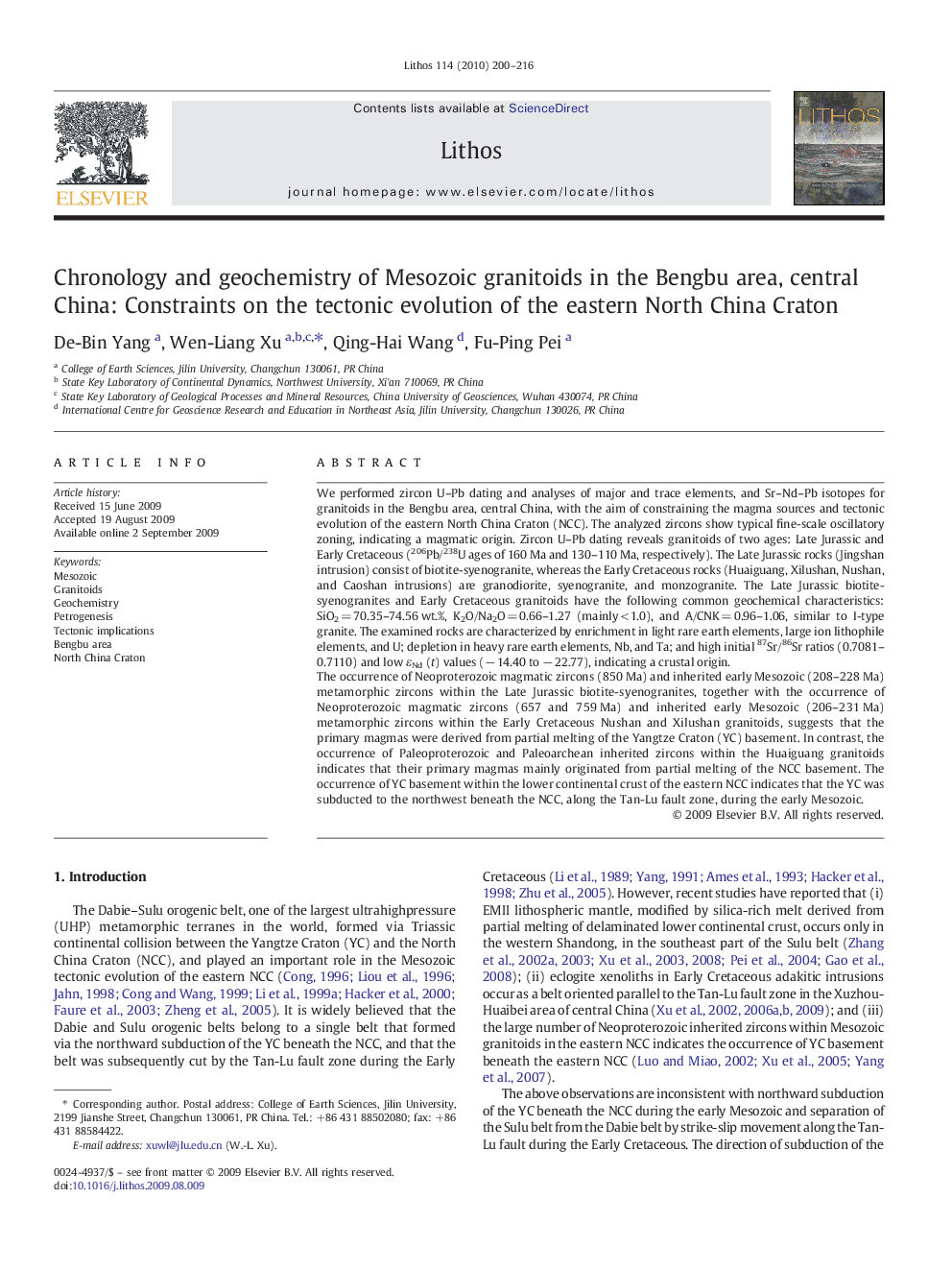| Article ID | Journal | Published Year | Pages | File Type |
|---|---|---|---|---|
| 4717313 | Lithos | 2010 | 17 Pages |
We performed zircon U–Pb dating and analyses of major and trace elements, and Sr–Nd–Pb isotopes for granitoids in the Bengbu area, central China, with the aim of constraining the magma sources and tectonic evolution of the eastern North China Craton (NCC). The analyzed zircons show typical fine-scale oscillatory zoning, indicating a magmatic origin. Zircon U–Pb dating reveals granitoids of two ages: Late Jurassic and Early Cretaceous (206Pb/238U ages of 160 Ma and 130–110 Ma, respectively). The Late Jurassic rocks (Jingshan intrusion) consist of biotite-syenogranite, whereas the Early Cretaceous rocks (Huaiguang, Xilushan, Nushan, and Caoshan intrusions) are granodiorite, syenogranite, and monzogranite. The Late Jurassic biotite-syenogranites and Early Cretaceous granitoids have the following common geochemical characteristics: SiO2 = 70.35–74.56 wt.%, K2O/Na2O = 0.66–1.27 (mainly < 1.0), and A/CNK = 0.96–1.06, similar to I-type granite. The examined rocks are characterized by enrichment in light rare earth elements, large ion lithophile elements, and U; depletion in heavy rare earth elements, Nb, and Ta; and high initial 87Sr/86Sr ratios (0.7081–0.7110) and low εNd (t) values (− 14.40 to − 22.77), indicating a crustal origin.The occurrence of Neoproterozoic magmatic zircons (850 Ma) and inherited early Mesozoic (208–228 Ma) metamorphic zircons within the Late Jurassic biotite-syenogranites, together with the occurrence of Neoproterozoic magmatic zircons (657 and 759 Ma) and inherited early Mesozoic (206–231 Ma) metamorphic zircons within the Early Cretaceous Nushan and Xilushan granitoids, suggests that the primary magmas were derived from partial melting of the Yangtze Craton (YC) basement. In contrast, the occurrence of Paleoproterozoic and Paleoarchean inherited zircons within the Huaiguang granitoids indicates that their primary magmas mainly originated from partial melting of the NCC basement. The occurrence of YC basement within the lower continental crust of the eastern NCC indicates that the YC was subducted to the northwest beneath the NCC, along the Tan-Lu fault zone, during the early Mesozoic.
